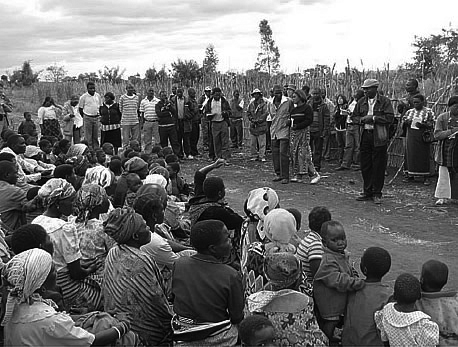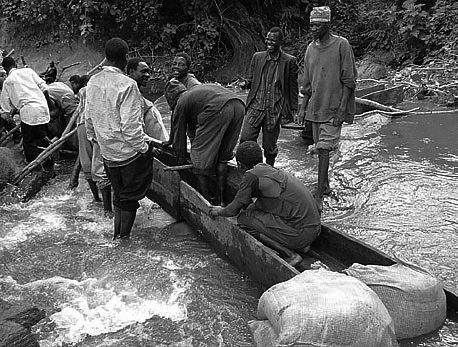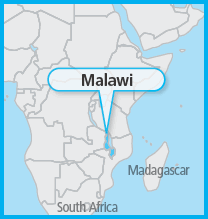Japan's Official Development Assistance White Paper 2009
Column 15 Bringing Water to the Fields Quickly, Cheaply, Simply and Safely!
— A Project for Hand-Built Irrigation in Malawi —
In Malawi, a southern African country, its agriculture relies on the rainy season. Food shortages often occur just before the rain comes, and in particularly dry years the situation is unbearable for many farmers. The amount of food available in the country changes depending on the wetness or dryness of each year. It is vital that Malawi, an unstable country, be able to produce its staple food, maize, even during the dry season. If Malawi could use irrigation to produce maize year-round, the farmers there would be able to secure greater food stocks and higher incomes. With this thought in mind, Japan began to cooperate on the Project for Smallholder Irrigation Development in 2006.
Mr. Nkhoma, head of the Center for the Spread of Agriculture in Malawi, is one of the key players in this project. Fond of Japan, he spent the seven years prior to the project working on a horticulture technology project with Japan Overseas Cooperation Volunteers, and has visited Japan before to receive training.
When Mr. Nkhoma was transferred to the Project for Smallholder Irrigation Development in May 2008, he was excited, and worried. While he did not have any experience working on irrigation or arable land projects at the time, he knew that "the Japanese are punctual and work hard." He felt uneasy, but he nevertheless dove into his work with the Japanese experts who were dispatched for the project.
Mr. Nkhoma had always believed that irrigation required ample resources and complex technology, but he found the motto for the project was set as "quick, cheap, simple, and safe." The project aims to teach Malawians techniques which can be used immediately after training. Project members use easily obtained materials – such as wood, bamboo, stones, grass, and clay. The experts show trainees how these materials, together with the right location and right methods, can be used to create irrigation channels, using simple methods featuring drawings, and on some occasions even kamishibai, a traditional Japanese art which uses pictures to tell a story. Lastly, the project encourages the formation of "irrigation clubs" to take care of management, maintenance and repair once irrigation channels have been built. Mr. Nkhoma believes that the project does not provide concrete or any other such materials but helps to motivate farmers to take the initiative and implement continuous efforts for irrigation.
Thanks to the hard work of Mr. Nkhoma, the farmers are now able to obtain agricultural income year-round.. This extra income helps farmers when their revenues fall due to long rainy seasons or when the price of food rises during the breaks between the dry and rainy seasons.
Mr. Okada and Mr. Shiraishi, the JICA experts who are in charge of this project, have praised Mr. Nkhoma highly, calling him "a man we can trust with our project."
Mr. Nkhoma himself is passionate about the project, commenting, "I am constantly amazed at how the farmers who learned these techniques are able to improve upon them and come up with their own ideas. Their potential is astounding. We won't just stand by and let the farmers come up with better methods than our own; we intend to keep developing better and better irrigation techniques. It is my hope that we can create an irrigation system across an even larger area and contribute to an increase in food production in Malawi."

Mr. Nkhoma (far right) giving an explanation to farmers (Photo: JICA)

Villagers create an irrigation channel (Photo: JICA)

